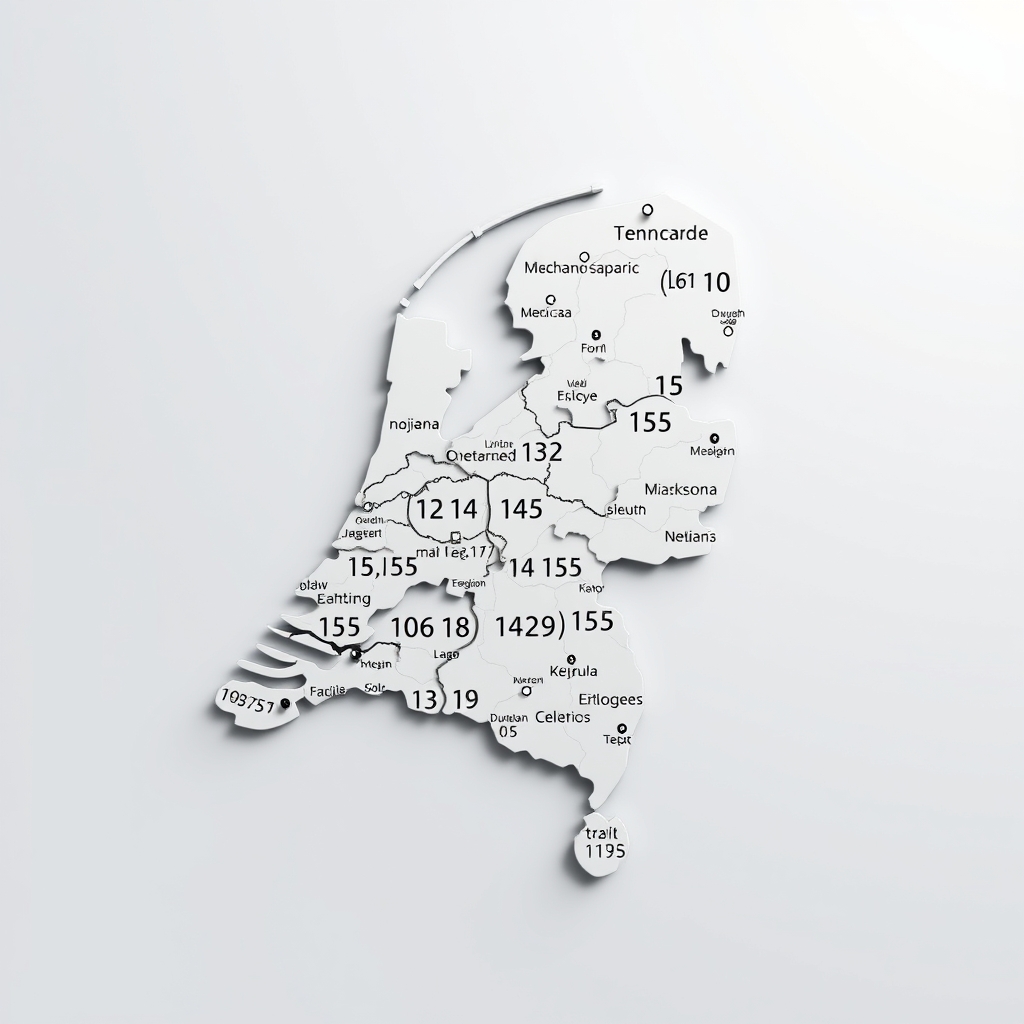Netherlands Postal Code Verification API vs Dutch Postal Code API: What to Choose?

When it comes to validating and looking up Dutch postal codes, developers have a couple of robust options at their disposal: the Netherlands Postal Code Verification API and the Dutch Postal Code API. Both APIs are designed to enhance address validation processes, but they come with their own unique features and capabilities. In this blog post, we will delve into a detailed comparison of these two APIs, exploring their features, performance, scalability, and use cases to help you determine which one is best suited for your needs.
Overview of Both APIs
The Netherlands Postal Code Verification API is specifically tailored to deliver precise validation and comprehensive lookup data for Dutch zip codes. It ensures accuracy and reliability, enhancing address validation processes and optimizing postal code queries for applications targeting the Netherlands. This API minimizes postal code entry errors, thereby enhancing data integrity and user experience.
On the other hand, the Dutch Postal Code API is designed to provide users with accurate validation and detailed lookup information for Dutch postal codes. It focuses on accuracy and reliability, allowing developers to improve address validation processes and streamline postal code lookup functions for applications targeting the Netherlands. Both APIs leverage official datasets to ensure compliance with established standards and formats.
Feature Comparison
Address by Postal Code and House Number
Both APIs offer the capability to retrieve address details based on a given postal code and house number. This feature is essential for applications that require precise address validation.
For the Netherlands Postal Code Verification API, the request requires both a postal code and a house number. The response includes detailed information such as province, municipality, city, street, and geographical coordinates.
{"province":"Noord-Holland","municipality":"Amsterdam","city":"Amsterdam","postal_code":"1011AJ","street":"Prins Hendrikkade","street_number":"104","street_number_addition":"C","latitude":52.3755598,"longitude":4.9028406}This response structure allows developers to easily extract relevant address components for display or further processing.
Similarly, the Dutch Postal Code API provides the same functionality. The response format is identical, ensuring consistency across both APIs.
{"province":"Noord-Holland","municipality":"Amsterdam","city":"Amsterdam","postal_code":"1011AJ","street":"Prins Hendrikkade","street_number":"104","street_number_addition":"C","latitude":52.3755598,"longitude":4.9028406}This feature is crucial for applications that need to validate user-entered addresses against official datasets.
House Numbers by Postal Code
Another important feature offered by both APIs is the ability to retrieve house numbers associated with a specific postal code. This is particularly useful for applications that need to display a list of valid addresses for a given postal code.
In the Netherlands Postal Code Verification API, users must provide a postal code to receive a list of house numbers. The response includes an array of house number objects, each containing street details.
{"house_numbers":[{"street":"Prins Hendrikkade","street_number":"106","street_number_addition":"A"},{"street":"Prins Hendrikkade","street_number":"107","street_number_addition":"3"},{"street":"Prins Hendrikkade","street_number":"106","street_number_addition":"B"},{"street":"Prins Hendrikkade","street_number":"107","street_number_addition":"2"},{"street":"Prins Hendrikkade","street_number":"104","street_number_addition":"C"}]}This allows developers to dynamically populate address fields in forms or applications.
Likewise, the Dutch Postal Code API provides the same functionality, ensuring that developers can retrieve house numbers in a similar manner.
{"house_numbers":[{"street":"Prins Hendrikkade","street_number":"106","street_number_addition":"A"},{"street":"Prins Hendrikkade","street_number":"107","street_number_addition":"3"},{"street":"Prins Hendrikkade","street_number":"106","street_number_addition":"B"},{"street":"Prins Hendrikkade","street_number":"107","street_number_addition":"2"},{"street":"Prins Hendrikkade","street_number":"104","street_number_addition":"C"}]}This consistency in feature offerings makes it easier for developers to switch between APIs if necessary.
Post Code Validation
Both APIs also provide a validation feature that checks whether a given postal code is valid. This is a critical function for ensuring that user input is accurate before processing further.
For the Netherlands Postal Code Verification API, users must provide a postal code to receive a simple boolean response indicating validity.
{"valid":true}This straightforward response allows developers to quickly ascertain whether the postal code entered by a user is valid.
Similarly, the Dutch Postal Code API offers the same validation feature, returning a boolean response for postal code validity.
{"valid":true}This feature is essential for applications that require high data integrity and user experience.
Performance and Scalability Analysis
When considering performance and scalability, both APIs are designed to handle a significant volume of requests efficiently. They utilize official datasets, which are regularly updated to ensure data accuracy and reliability. This means that both APIs can scale effectively as application demands grow.
However, the actual performance may vary based on factors such as server response times, network latency, and the complexity of the queries being made. Developers should conduct performance testing in their specific environments to determine which API meets their needs best.
Pros and Cons of Each API
Netherlands Postal Code Verification API
- Pros:
- Highly accurate validation using official datasets.
- Comprehensive lookup capabilities for detailed address information.
- Simple and clear response structure.
- Cons:
- Limited to Dutch postal codes only.
- May require additional handling for edge cases in address formatting.
Dutch Postal Code API
- Pros:
- Accurate validation and detailed lookup services.
- Consistent response structure with the Netherlands Postal Code Verification API.
- Regularly updated datasets ensure high data quality.
- Cons:
- Similar limitations as the Netherlands Postal Code Verification API regarding geographic scope.
- Potentially less documentation available compared to more widely used APIs.
Final Recommendation
Choosing between the Netherlands Postal Code Verification API and the Dutch Postal Code API ultimately depends on your specific use case and requirements. If your application requires extensive address validation and lookup capabilities with a focus on accuracy, either API would serve you well. However, if you are looking for a more established API with potentially broader community support, the Dutch Postal Code API may be the better choice.
For applications that require high data integrity and user experience, both APIs provide essential features that can significantly enhance address validation processes. Developers should consider conducting performance tests and evaluating the specific needs of their applications before making a final decision.
Ready to test the Netherlands Postal Code Verification API? Want to use the Dutch Postal Code API in production? Visit the respective developer docs for complete API references and start enhancing your applications today!





